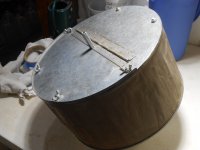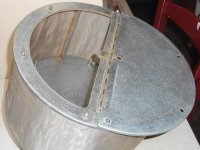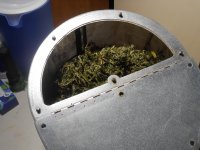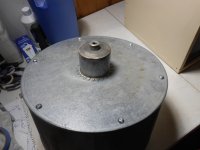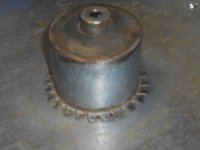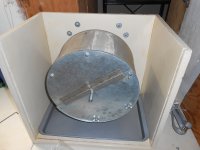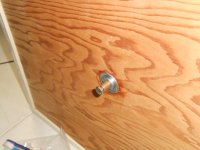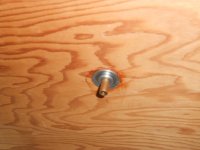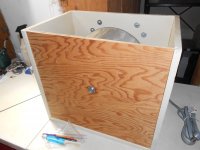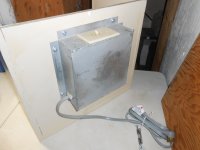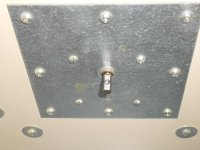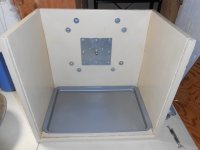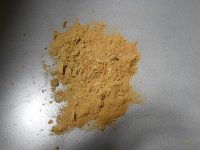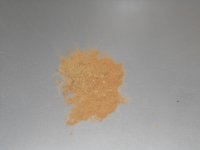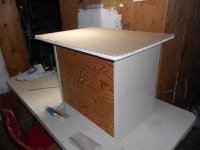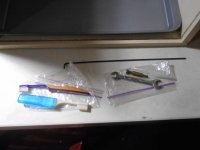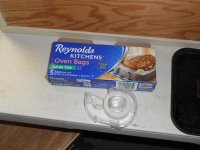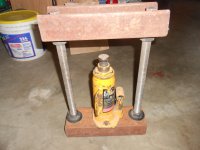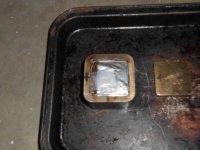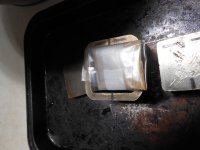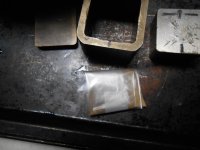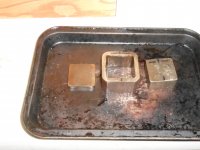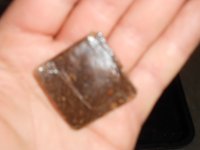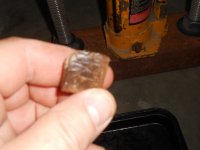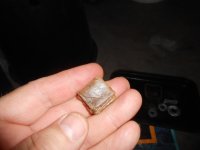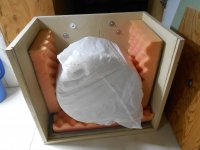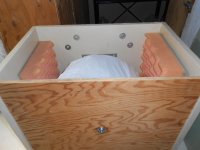moose eater
Well-known member
About 23 years ago, plus or minus, I asked a union tin-bender to make a tumbler wheel for my hash, telling him it was for separating gold fines.
Miners tend to use some of the same screen/mesh, and I had access back then to #100 stainless steel. Mind you, I see many persons referencing their screen as 120 micron or 100 microns, but what I was told when I ordered this stuff was that the refer4nce to #100 had to do with a square inch of the material being 100 holes by 100 holes, and that if I wanted even more superior hash, to use a #120; not by the union tin-bender, but by other hashish lovers.
when the odd hole appears in the screen, I've dabbed it on both sides with some sort of clear super glue.
I've also made a habit of trying to routinely clean the tumbler wheel with a 99.9% iso alcohol bath, to open up the screen a bit.
The box was over-built, and heavier than it needed to be, a trademark or relatively consistent tendency on my part.
Once the box was built, I painted it with an epoxy paint that was for kitchen appliances, etc., but which also adhered to wood.
Reinforcement plates were added to the inside of the box, on the opposite side of the back 'wall' of the box from the Dayton 115-volt ac, 25-rpm reduction gear drive motor. And a switch box that would cover the motor, the wiring, and the 2-pole light switch was mounted to the back exterior of the box, also relying on the 'anchor plate' inside the box, so the bolts and nuts wouldn't get sucked into the wood.
So... Without further ado, here's the infamous home-designed, custom-built tumbler from which I have smoked pretty darned good hashish for nearly a quarter-century.
The wheel:
Miners tend to use some of the same screen/mesh, and I had access back then to #100 stainless steel. Mind you, I see many persons referencing their screen as 120 micron or 100 microns, but what I was told when I ordered this stuff was that the refer4nce to #100 had to do with a square inch of the material being 100 holes by 100 holes, and that if I wanted even more superior hash, to use a #120; not by the union tin-bender, but by other hashish lovers.
when the odd hole appears in the screen, I've dabbed it on both sides with some sort of clear super glue.
I've also made a habit of trying to routinely clean the tumbler wheel with a 99.9% iso alcohol bath, to open up the screen a bit.
The box was over-built, and heavier than it needed to be, a trademark or relatively consistent tendency on my part.
Once the box was built, I painted it with an epoxy paint that was for kitchen appliances, etc., but which also adhered to wood.
Reinforcement plates were added to the inside of the box, on the opposite side of the back 'wall' of the box from the Dayton 115-volt ac, 25-rpm reduction gear drive motor. And a switch box that would cover the motor, the wiring, and the 2-pole light switch was mounted to the back exterior of the box, also relying on the 'anchor plate' inside the box, so the bolts and nuts wouldn't get sucked into the wood.
So... Without further ado, here's the infamous home-designed, custom-built tumbler from which I have smoked pretty darned good hashish for nearly a quarter-century.
The wheel:

